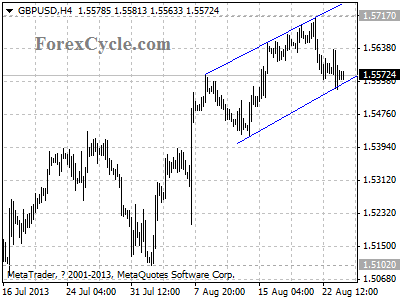By MoneyMorning.com.au
We’ve made a lot of enemies in recent months.
Most of those enemies are folks who hate that we’re bullish on stocks.
We think they started reading Money Morning when we were bearish on stocks. So now they don’t like it that we’re trying to exploit the Aussie stock rally by buying stocks.
Maybe they’re angry at missing out on the stock rally.
Or maybe there’s a misunderstanding. After all, just because we say it’s a great time to buy stocks doesn’t mean we’re ignoring the big problems facing the world economy.
So, to prove that we understand the risks in the market – and to make sure you understand them too – the newest member of our team, Vern Gowdie, joins Money Morning each day this week.
You’ll read his take on the state of the economy below. Vern’s view is that you shouldn’t buy stocks…or not yet anyway. But first, we’ll give you our slant on the latest stock action…
If you’ve read Money Morning in recent weeks you’ll know we’ve gotten more cautious on Aussie stocks as the S&P/ASX 200 trades above the 5,100-point level.
We’re cautious because each time the index has traded around this level since 2010, stocks have fallen. It has already happened several times this year.
But at some point (perhaps this time) our bet is stocks will successfully burst through this key level. And once they do, it’ll be a race to 7,000 points.
But why should this time be any difference? And why hasn’t it already happened?
Stock Markets Set to Rally as Fears Decline
If things are as positive for stocks as we suggest, why couldn’t the market keep going higher the last time it hit this level?
The quick answer is: that’s just how markets are.
Remember that millions of Aussie investors make up the Australian market. On any given day they act and react according to the latest news filtering through the market.
Some days it’s good news, other days it’s bad news.
Usually bad news means that stocks will fall. And a constant stream of bad news can lead to big falls. Such as the big fall from mid-May through to the end of June.
But at some point the market starts to react to the bad news in the same way as the villagers reacted to the boy who cried wolf.
Investors hear the bad news, but the Sun shines, the electricity still works, and for most people, they’ve still got a job. As far as they can see, nothing is wrong.
So they stop listening to the bad news and assume that things are bound to get better. That can lead to rising stock prices.
Of course, if you know the story about the Boy Who Cried Wolf, the villagers made a bad choice by ignoring his final warning.
And that’s why we don’t want you to completely ignore the warnings (hence why we’re publishing Vern Gowdie’s alternative market view this week).
The investors who will get in the most strife during the next market collapse are those investors who ignore all the bad news.
Those are the investors who tend to put every last cent of their savings into stocks without thinking of the risks.
Naturally, they tend to do that near the top of the market. And then they sell near the bottom of the market.
Saying that, there is a time when you should consider buying near a market top. And in our view that time is now.
Because although it’s important that you pay attention to the warnings, you can’t let it get in your way of making money…
Orderly Queue to Become a Rampage
We’ll show you why with this chart of the S&P/ASX 200:
 Source: CMC Markets Stockbroking
Source: CMC Markets StockbrokingNow, we won’t claim to be a charting expert. We leave that lark to our technical trading guru Murray Dawes.
But the way we read the chart is that the market is consolidating into a range near this key level (above 5,000 points).
This tells us that broadly speaking, investors are starting to have a positive take on the future. Put another way, stocks haven’t rallied 10% in just a few weeks because investors are nervous.
The one thing that’s missing is the catalyst and confidence booster that will cause investors to buy stocks at these and even higher prices.
When that catalyst arrives (whatever it is) the orderly queue that’s currently forming will disappear and will turn into a rampage as investors rush to buy stocks.
That’s why we’re still buying stocks here, even though the market is at an extremely risky level.
Of course, there’s no guarantee the picture we’ve laid out will happen. If the catalyst doesn’t appear then you could see a repeat of the May to June fall.
But we’re prepared to go out on a limb. Don’t put everything you’ve got into the market, but make sure you’ve got some exposure to stocks and make sure you can add to your position quickly if we’re right and stocks keep moving higher.
Cheers,
Kris+
Join Money Morning on Google+
From the Port Phillip Publishing Library
Special Report: The Sixth Revolution
Daily Reckoning: The Global Trend Towards Wealth Protection
Money Morning: Two Approaches to Investing…
Pursuit of Happiness: Learning to Avoid the Governments ‘Noble Wealth Trap’
Australian Small-Cap Investigator:
How to Make Big Money from Small-Cap Stocks







